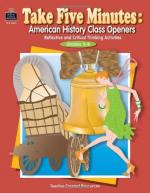|
This section contains 1,278 words (approx. 5 pages at 300 words per page) |

|
Cochise: 8000-300 B.C.
In the desert regions of the American Southwest the Paleo-Indians adapted their big-game hunting techniques to the pursuit of the smaller mammals native to the region. The hunting- and-gathering Desert culture, also known as the Cochise tradition, developed during the Archaic period, and when corn entered the region after 3000 B.C., the Cochise people began to adopt a more sedentary lifestyle. Still, the growing of domesticated crops did not restrict the Cochise to any one particular site, for they continued to follow a pattern of migration that was tied to changes in the seasons. With the development of pottery around 300 B.C., the Desert culture developed further into three distinct traditions: the Mogollon, Hohokam, and Anasazi.
Mogollon: 300 B.C. to 1100 A.D.
The Mogollon culture emerged out of the Archaic Cochise tradition, and their archaeological sites can...
|
This section contains 1,278 words (approx. 5 pages at 300 words per page) |

|




